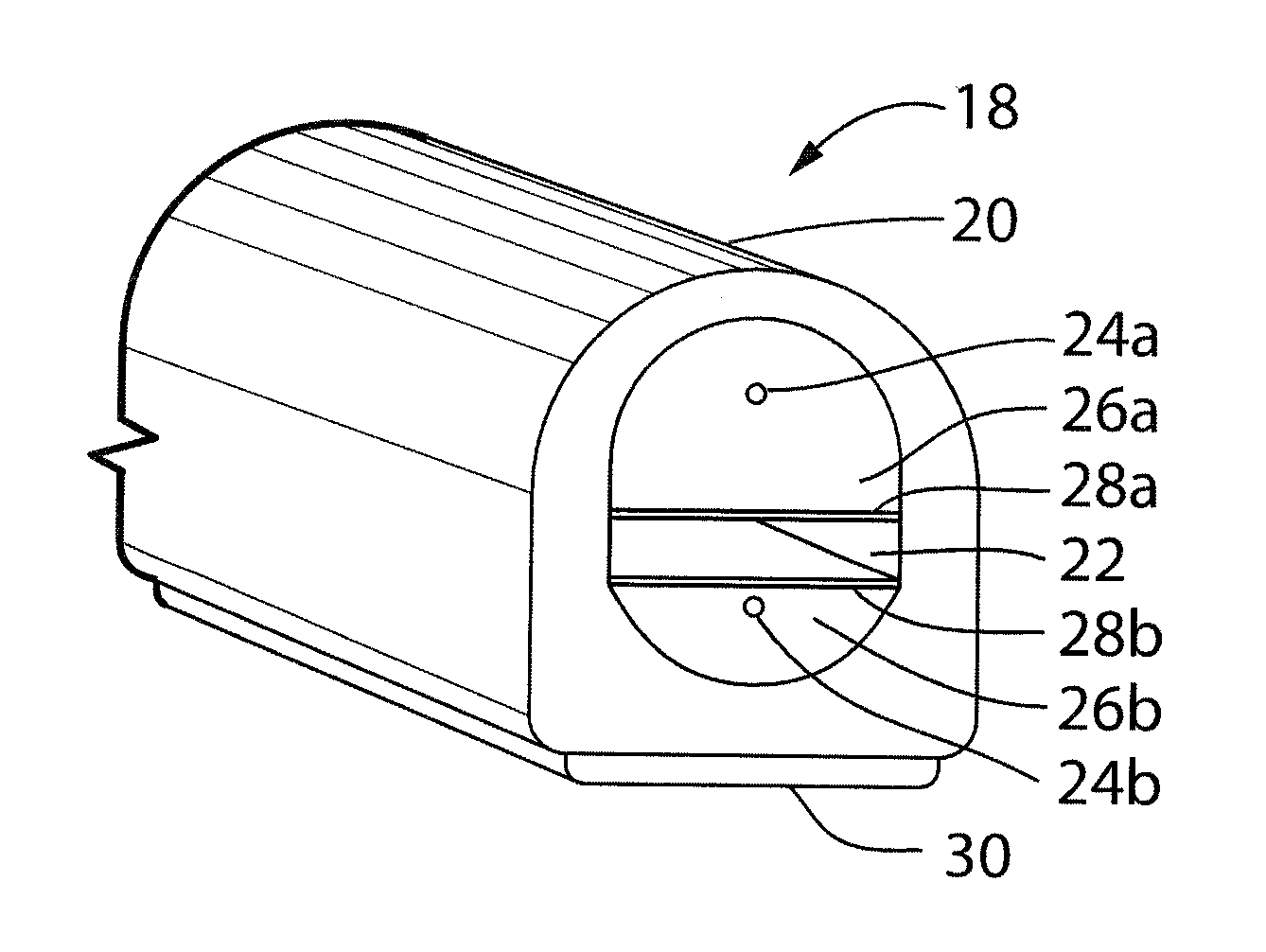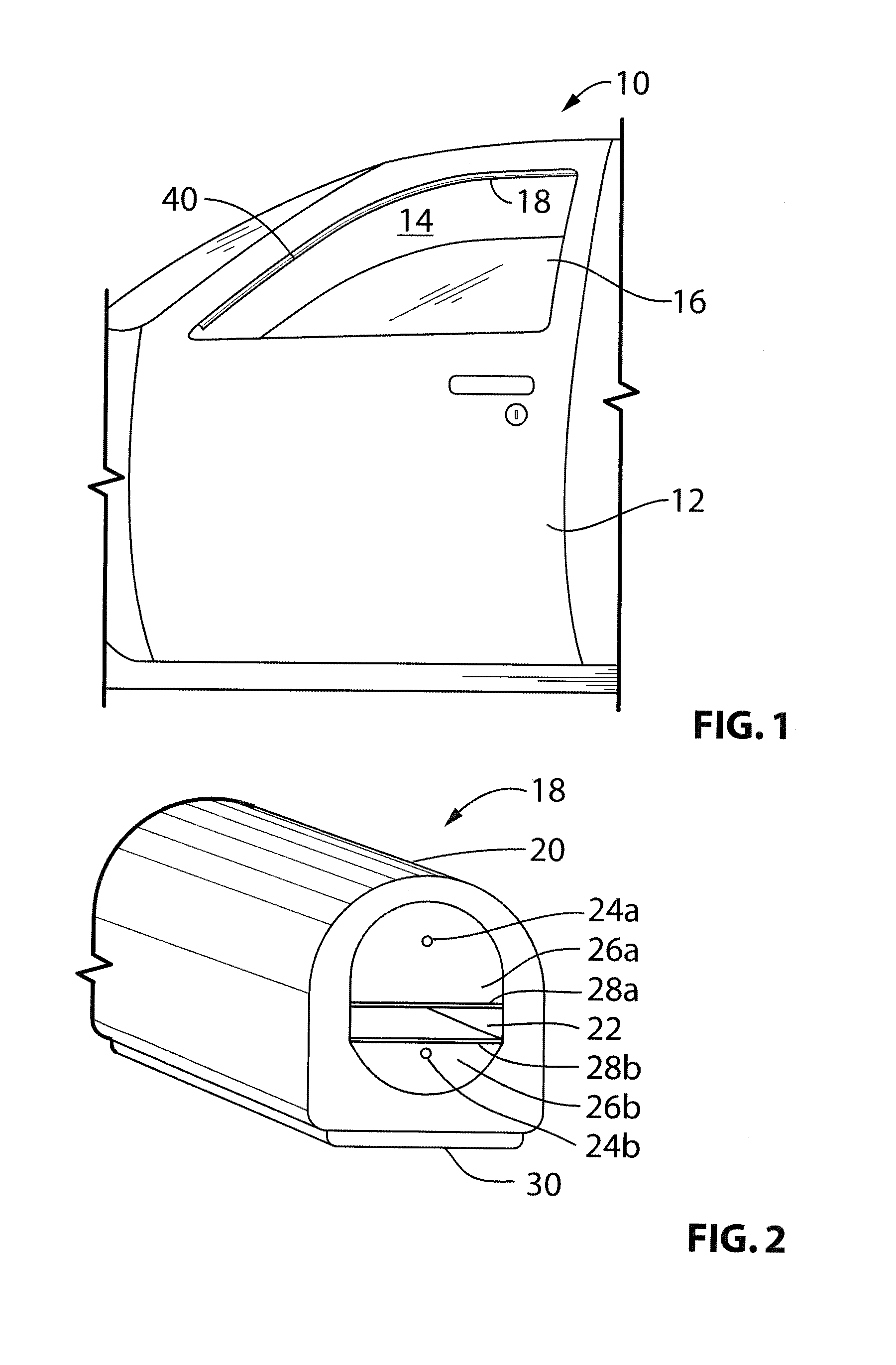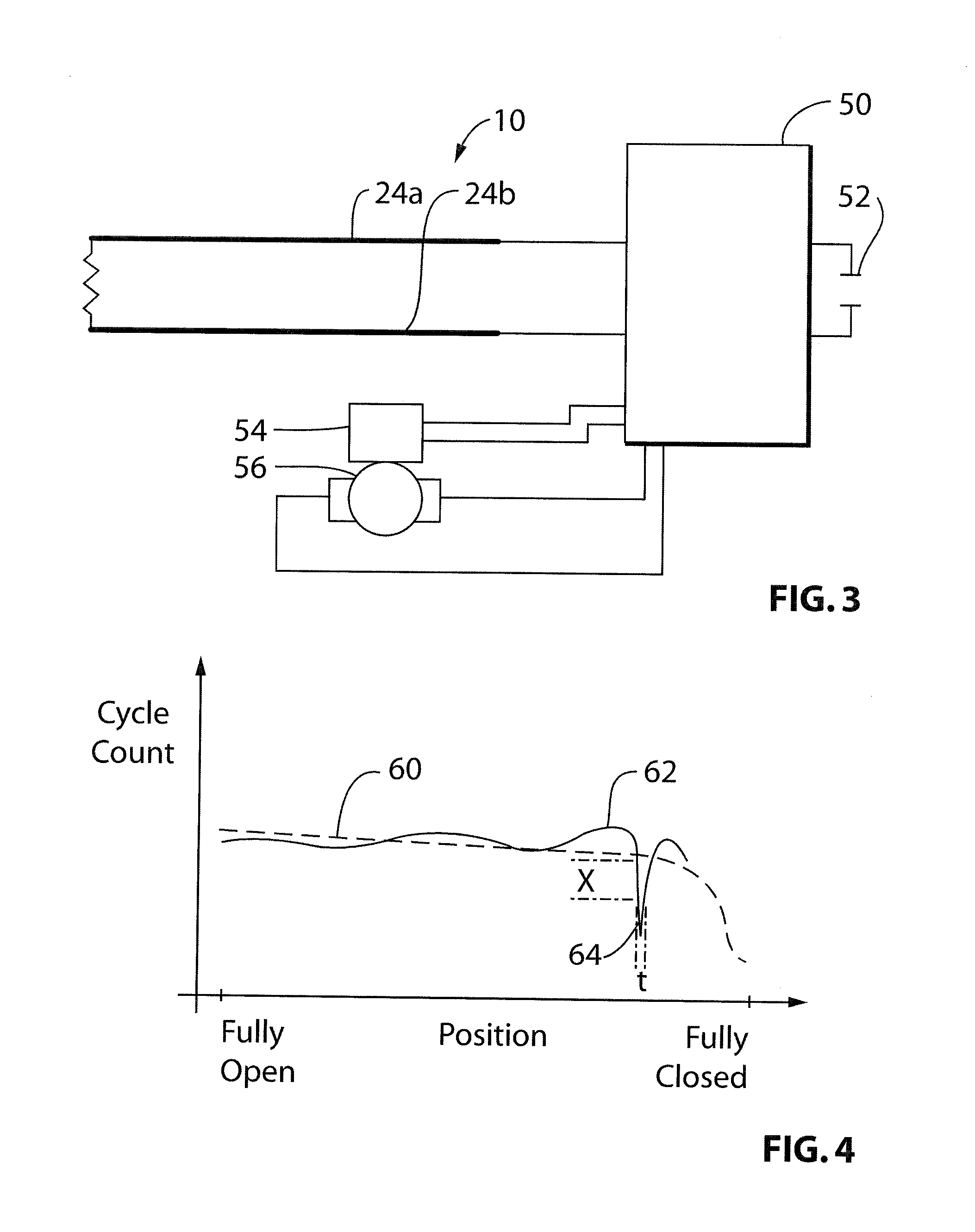Vehicular Anti-pinch system with rain compensation
a technology of anti-pinch system and rain compensation, which is applied in the direction of instruments, doors, and using reradiation, etc., can solve the problems of large background capacitance, large gap between sliding door and vehicle frame, and too many false positives
- Summary
- Abstract
- Description
- Claims
- Application Information
AI Technical Summary
Benefits of technology
Problems solved by technology
Method used
Image
Examples
Embodiment Construction
[0026]This application incorporates the following publications by reference in their entirety:[0027]PCT Publication No. WO 2002 / 101929[0028]PCT Publication No. WO 2002 / 012699[0029]PCT Publication No. WO 2003 / 038220[0030]PCT Publication No. WO 2005 / 059285
[0031]FIG. 1 illustrates a typical automotive door 12 that is comprised of sheet metal and includes an aperture 14, structured as a window frame 40, which may be closed by a window pane or glass panel 16. The glass panel 16 is raised or lowered by a window regulator (not shown) which includes an electric motor as the motive driving source, as well known in the art per se. The motor is controlled in part by a non-contact obstruction sensor or anti-pinch assembly 10, the particulars of which are described in greater detail below. The anti-pinch assembly 10 includes an elongate sensor 18 that prevents the glass panel 16 from pinching or crushing a foreign object such a finger (not shown) that may be extending through the aperture 14 whe...
PUM
 Login to view more
Login to view more Abstract
Description
Claims
Application Information
 Login to view more
Login to view more - R&D Engineer
- R&D Manager
- IP Professional
- Industry Leading Data Capabilities
- Powerful AI technology
- Patent DNA Extraction
Browse by: Latest US Patents, China's latest patents, Technical Efficacy Thesaurus, Application Domain, Technology Topic.
© 2024 PatSnap. All rights reserved.Legal|Privacy policy|Modern Slavery Act Transparency Statement|Sitemap



